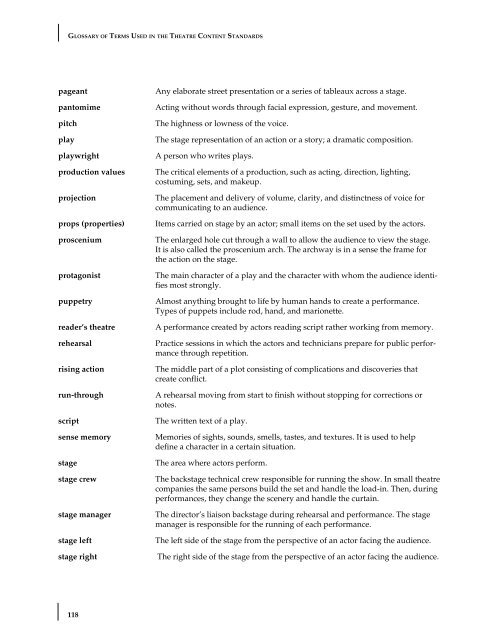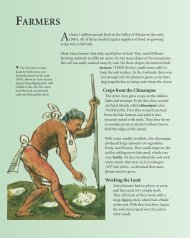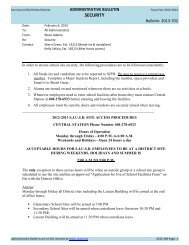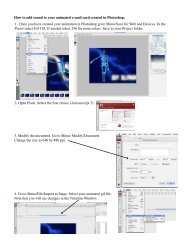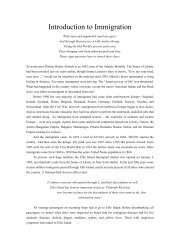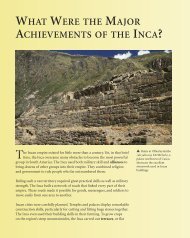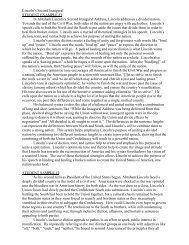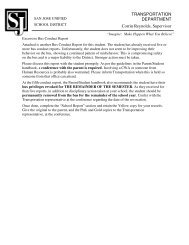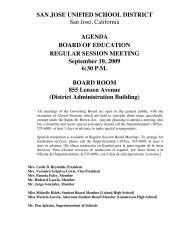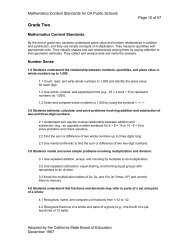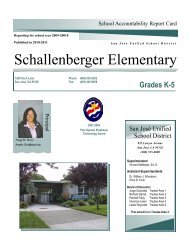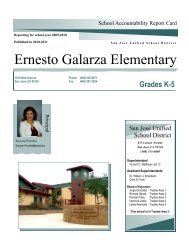Visual and Performing Arts Content Standards - California ...
Visual and Performing Arts Content Standards - California ...
Visual and Performing Arts Content Standards - California ...
You also want an ePaper? Increase the reach of your titles
YUMPU automatically turns print PDFs into web optimized ePapers that Google loves.
GLOSSARY OF TERMS USED IN THE THEATRE CONTENT STANDARDS<br />
pageant Any elaborate street presentation or a series of tableaux across a stage.<br />
pantomime Acting without words through facial expression, gesture, <strong>and</strong> movement.<br />
pitch The highness or lowness of the voice.<br />
play The stage representation of an action or a story; a dramatic composition.<br />
playwright A person who writes plays.<br />
production values The critical elements of a production, such as acting, direction, lighting,<br />
costuming, sets, <strong>and</strong> makeup.<br />
projection The placement <strong>and</strong> delivery of volume, clarity, <strong>and</strong> distinctness of voice for<br />
communicating to an audience.<br />
props (properties) Items carried on stage by an actor; small items on the set used by the actors.<br />
proscenium The enlarged hole cut through a wall to allow the audience to view the stage.<br />
It is also called the proscenium arch. The archway is in a sense the frame for<br />
the action on the stage.<br />
protagonist The main character of a play <strong>and</strong> the character with whom the audience identifies<br />
most strongly.<br />
puppetry Almost anything brought to life by human h<strong>and</strong>s to create a performance.<br />
Types of puppets include rod, h<strong>and</strong>, <strong>and</strong> marionette.<br />
reader’s theatre A performance created by actors reading script rather working from memory.<br />
rehearsal Practice sessions in which the actors <strong>and</strong> technicians prepare for public performance<br />
through repetition.<br />
rising action The middle part of a plot consisting of complications <strong>and</strong> discoveries that<br />
create conflict.<br />
run-through A rehearsal moving from start to finish without stopping for corrections or<br />
notes.<br />
script The written text of a play.<br />
sense memory Memories of sights, sounds, smells, tastes, <strong>and</strong> textures. It is used to help<br />
define a character in a certain situation.<br />
stage The area where actors perform.<br />
stage crew The backstage technical crew responsible for running the show. In small theatre<br />
companies the same persons build the set <strong>and</strong> h<strong>and</strong>le the load-in. Then, during<br />
performances, they change the scenery <strong>and</strong> h<strong>and</strong>le the curtain.<br />
stage manager The director’s liaison backstage during rehearsal <strong>and</strong> performance. The stage<br />
manager is responsible for the running of each performance.<br />
stage left The left side of the stage from the perspective of an actor facing the audience.<br />
stage right The right side of the stage from the perspective of an actor facing the audience.<br />
118


